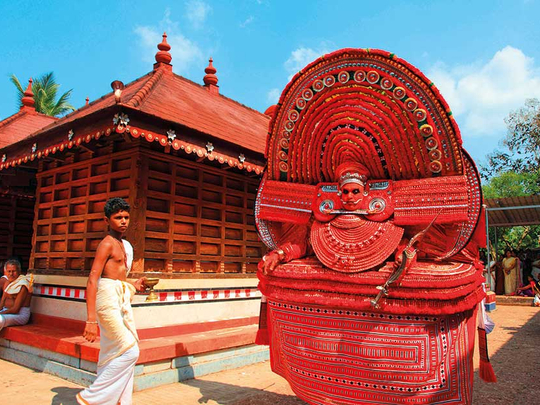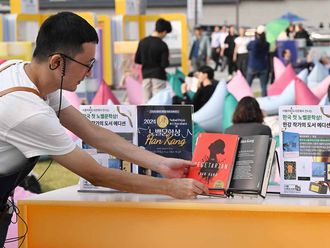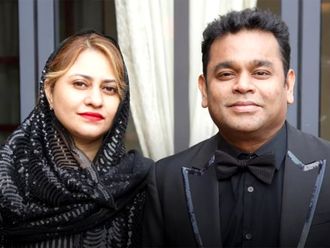
In a quiet village in Kannur in northern Kerala, octogenarian Mythili P. welcomed the Theyyam once again this year to her century-old ancestral home — or tharavadu — just as her family has done for more than five decades.
Her children, grandchildren, relatives and almost the entire neighbourhood had gathered in the open area in front of the Thaivalappill home, mesmerised by the majestic Vayanattu Kulavan Theyyam who was wearing an elaborate headdress, his face and body brightly painted with kohl-rimmed eyes, performing a series of dance movements to the rhythm of drums — or chenda — kuzhal and other folk musical instruments, all accompanied by resonating chants.
Every year, the occasion is marked by a true sense of community spirit where people come forward to help with arrangements and the preparation of a meal for everyone present.
The incredibly vibrant and ritualistic art practised across the Malabar region in the south Indian state of Kerala represents the victory of good over evil, telling stories of brave warriors, local heroes and mythical characters of the past, breaking barriers of caste, gender and other discrimination.
“As far as I remember, there has been little change in the traditions and rituals over the years”, Mythili P. tells Weekend Review.
Traditionally, people have relied on the advice and predictions of Theyyams. “It is all a matter of one’s faith in this age-old tradition,” she says.
She remembers how her own unwavering belief was based on an incident that occurred decades ago, when her tharavadu and its surrounding areas were engulfed by a sudden gust of strong winds soon after a troupe of Theyyam artistes left without performing since no one was present to welcome them.
In this present age of development and technology, people continue to revere the power of the thousand-year-old practice of Theyyam in gaining a coveted job, conceiving a healthy child or arranging a good marriage alliance for their sons or daughters. Theyyam is now witnessing an unprecedented enthusiasm with many sacred groves being renovated and there’s a great resurgence of the ritual in existing ones. Theyyam certainly fulfills the yearning of people to go back to the goodness and nostalgia of the past. There is a great festive spirit surrounding the ritual, and it draws huge crowds.
There are more than 400 forms of Theyyam, each with its unique style, music, costumes and makeup. Even today, only specific castes have the right to perform certain Theyyams at specific shrines. The stunning costumes include skirts made of spliced coconut leaves, bamboo sticks and other natural materials while the face and body are painted with different patterns in the bright orange, red and yellows made of natural dyes and indigenously available materials. The headgear is undoubtedly the most magnificent part of the Theyyam costume — made of bamboo and wood and decorated elaborately with richly-coloured fabrics, coconut leaves and flowers.
Combining various dance movements, drama, music, mime and storytelling, the immensely energetic Theyyam traditionally performed from October to May, and originally represented the hopes and aspirations of marginalised segments of society. It is now a mass celebration of divinity and devotion, commanding respect from across all social strata.
Every deity has his or her own story, with some rare ones called Perumkaliyattam that are performed every 12 years. The Kannangattu Bhagavathi, with silver fangs and sword, inspires reverence and fear. The fascinating Muchilottu Bhagavathi was once a scholarly Namboodiri girl, who was accused of improper behaviour and was later deified. The elegant Vishnumurthy and the Puliyoor Kali are magnificent in their own ways. The performance of Theechamundi requires considerable effort by the supporting members who have to pull back the Theyyam who tries to rush into a pile of embers. The temple of Parassini Kadavu in Kannur is the home of Muthappan, the hunter deity and benevolent protector of the common man. The Theyyams held here draw people from far and wide.
What makes the Theyyam unique is the great sense of community participation each fosters and the complete commitment of the people in guarding their ritualistic heritage. The Theyyam artiste is helped by volunteers who assist with decorating the headdress and costumes, while others make careful arrangements for the rituals. Women generally help make garlands for decorating precincts while men help with other tasks.
Ashokan is one of the guardian attendants accompanying the Theyyam perfoming in his community shrine.
“This year, we witnessed large crowds of almost four thousand people — including women and children — at the night-long annual festival in my village,” he says. “Over recent years, the crowd of people gathering to watch Theyyams has definitely increased.”
The Theyyam artistes in heavy anklets, elaborate headgear and faces painted in intricate patterns add to the aura surrounding this fascinating art form but they do not reveal the many stories of the everyday struggles of men who transform themselves into forest and ancestor spirits, leaping through fire and going into trances. They are part of a tradition handed down through family lines and spend years learning skills such as making costumes from coconut husks or painting intricate face patterns.
When not practicing the traditional dance form, they lead ordinary lives as government employees, auto rickshaw drivers and construction workers. However, before performing the Theyyam, they make intense mental, physical and spiritual preparations which include celibacy and abstinence in the weeks leading up to a performance.
During each performance, these Theyyakkaran become completely immersed, forgetting all their struggles as they later transform into a manifestation of the deities they represent. It’s then that they offer solutions to problems and possess powers to foretell the future.
At the Kadambur Sree Valiyamuttam Devi Kshetram in Kannur, devotees wait patiently, oblivious to the scorching heat of the afternoon sun, watching the Vellattam — a prelude to an actual Theyyam and a ritualistic act performed in partial costume. The air around the village temple is filled with faithful devotees, with temple priests and their assistants solemnly going about their duties along with the graceful movements of the Theyyam practitioner.
After the performance, the incarnate deity blesses the devotees with rice and turmeric powder, considered holy and believed to have healing powers. Theyyam allows the devotee direct communication with the deity and they stand in long queues awaiting their turn. When the Theyyam chants words of blessings, often holding the hand of each devotee, the proximity and immediacy combine for a surreal experience.
At the Kadambur Sree Valiyamuttam Devi Kshetramm, the Theyyam festival held on April 5 and 6 each year includes performances of the Thai Paradevatha. “We have huge gatherings of devotees every year,” a temple committee member says. “People have great faith that the predictions of the Theyyams here come true”.
Shanthamma has been a regular visitor at the Kadambur Sree Valiyamuttam Devi Kshetram for several years. “I really like the great camaraderie and sense of togetherness of the Theyyam festivals held at this Kshetram,” she says.
And it is in the kavus or sacred groves, village shrines and homes, that an authentic experience of the ancient ritualistic art form can be had, where the performances are held under a glow created by burning coconut leaf bundles or oil lamps in the dead of night.
Some enthusiasts, however, fear that the purity of ritualistic tradition is being compromised by dragging it to cities and treating it as mere performances on television shows and in public venues, and they are concerned over the sustainability of this rich heritage form.
The true essence of Theyyam lies in the efforts made by common people to preserve the role of the ritualistic art form in building cohesiveness and harmony in society — untainted by politics, cultural officials — and maintaining an inherent simplicity and goodness that defines the ancient practice. It is this bonding over rituals and traditions that helps retain the flavour of Theyyam as a truly unforgettable experience.
Fyna Ashwath is a writer based in Dubai.













